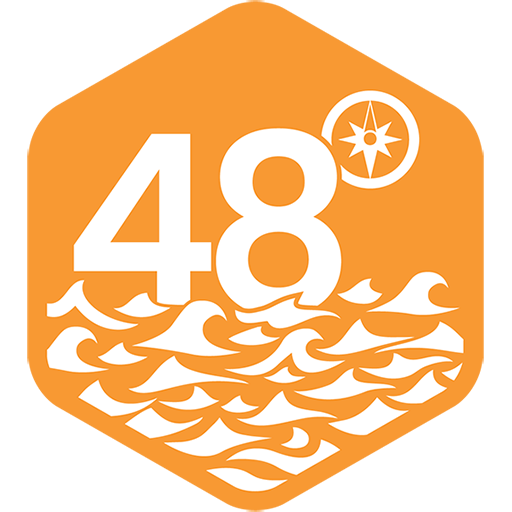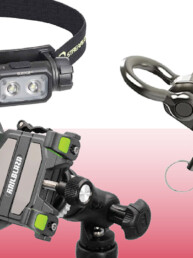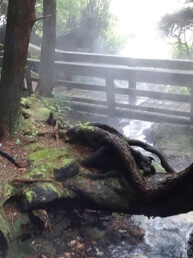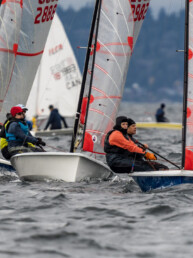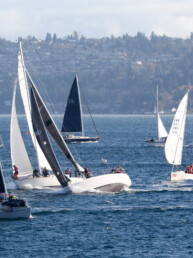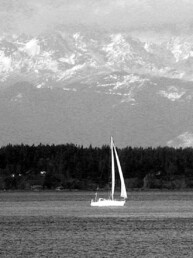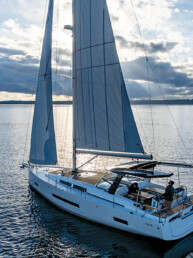Opening Day means different things for different sailors. For some, it means practicing maneuvers and parading past judges while steering in formation. For others, it’s a sailboat race that starts the spring series. Since I rarely stop sailing during the winter, Opening Day is a feeling and it usually entails a camp-cruising trip on saltwater.
Sitting hove-to in 30 knots of wind was not how I anticipated spending my Opening Day.
When my friend Andy and I decided to attempt a 25-mile circumnavigation of the South Sound’s Harstine Island in Row Bird, my 18-foot sail and oar boat, I worried we’d only have enough wind to sail half the route, if that. Working the tides seemed the best option to have an enjoyable trip that would only involve a modest amount of rowing.
Launching on an April morning from the hamlet of Arcadia, Washington, there was just enough wind to ghost past the charming, tree-covered Hope Island State Park. Continuing our clockwise route, we reached the undeveloped edge of Squaxin Island, a half mile farther on, and Row Bird bobbed lamely. The sky was clear where we were, but I could see clouds moving down the Olympic Peninsula.
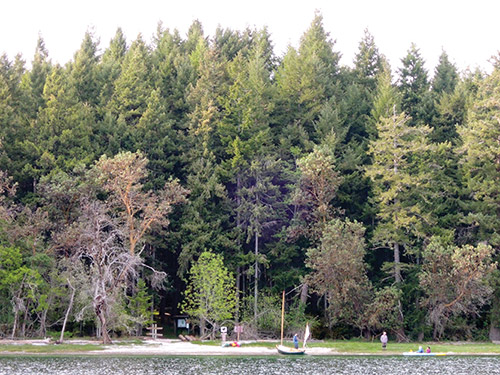
“Would the wind fill in, or should we start rowing?” I wondered.
In an hour, the tide was set to turn against us in Dana Passage. After that, the current would start to push in at about two knots. This wouldn’t be a problem for motor boats or even sailboats with a moderate amount of propulsion, but with our rowing speed also at around two knots, we’d be stuck—or worse, overtaken by the current.
“Who’s rowing first?” Andy asked.
“Whoever’s fastest,” I said.
Row Bird was loaded with two grown men, camping gear, food, and enough water for two days. A straw poll determined that I was the faster rower, and forty minutes later we passed through the narrows. “Home free,” I thought as we glided into the broad waters of Case Inlet. Then we noticed a large bank of dark clouds approaching over Harstine Island, which forms the northwest part of the passage.
The cloud heralded a chilly downpour, then a strong gust of wind. Maybe our sails would be useful again, after all. A slow but steady breeze followed the squall, so we stowed the oars and set sail, eyeing the patches of sun and the ominous cloud that was now moving in from the west.
Andy and I quickly established roles: The crewman was the weather spotter, while the helmsman managed the mainsheet and rudder, trying to avoid the worst of the wavelets beginning to form in the wide open waters of Case Inlet. The breeze built as the afternoon wore on, with a consistent pattern of wind, intense gusts, and squally rains. The helmsman would sheet in and then feather the mainsail continuously enough that it became tiring.
“I don’t think I’ve ever seen this boat go this fast, for this long,” I said to Andy as we skidded over cat’s paws in the worsening conditions.
Then the biggest squall of the day overtook us and we made the decision to heave-to. Spray blew all over us and the wind rose until it reached well over 20 knots. Row Bird drifted slowly backwards under mizzen alone. Thirty windy minutes later we’d drifted nearly a mile and were running out of sea room.
“The way I see it, we’ve got two choices,” I said in my best authoritative voice, “we can either get near the lee shore and throw out the anchor, or we can put the final reef in the sail and head for the windward shore of Harstine Island.”
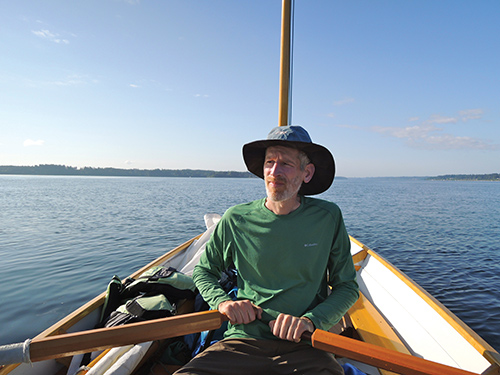
We reasoned that if the island’s hills blocked some of the wind, then we could round its tip, make a few tacks, and slip into the hurricane-hole known as Jarrell Cove State Park. It was a logical thought, but once we reached the tip of Harstine Island, the wind was blowing the water on both sides into a frothy mess. I was momentarily stumped.
Fortunately, we did have one thing going in our favor: a keelboat was converging on the point at the same time we were. After flagging them down we discovered they, too, were heading for the quiet comfort of Jarrell Cove. Dry, but worn out, we opted to get a tow.
When we arrived, several other boats were tied to the dock, which was now bathed in golden shafts of sunlight. Their hulls reflected in the pale water. It felt as though we’d entered a completely different season. A sailor from another boat cleated our mooring lines and handed us each a beer shortly after.
Another boater who had seen us in the distance approached. “You actually looked like you were in control out there,” he said without sarcasm.
Although we didn’t reach the cove totally on our own, we were in control. It was a high compliment and a fine way to finish our Opening Day.
Bruce Bateau sails and rows traditional boats with a modern twist in Portland, Oregon. His stories and adventures can be found at www.terrapintales.wordpress.com
Bruce Bateau
Bruce Bateau sails and rows traditional boats with a modern twist in Portland, Ore. His stories and adventures can be found at www.terrapintales.wordpress.com
